Thursday, August 3: This morning, I take the 10:17 a.m. Shinkansen from Hiroshima to Kyoto, arriving at 11:54 a.m. There, I get on the Nara Line to Nara Station (12:03-12:48). On the train, I sit beside a 34-year-old guy named Zachary who teaches grammar and literature to middle school students at a private school in L.A. He’s going to Nagasaki to make some kind of presentation for the peace ceremony on August 9. We chat for the entire 45 minutes; in Nara, I disembark from the train and am off to find the Hotel Nikko Nara.
After dropping my bags at my hotel, which is a nice one right next to the train station, I stop to eat tempura and rice at a restaurant at the station. There I meet a friendly and talkative Japanese housewife named Hiromi who asks if she can join me. She tells me she’s from Yokohama and has come down here for one day to see two things, one museum in Kyoto and one in Nara. She plans to return home late tonight. She herself has no children but she asks endless questions about my teaching job and says she is embarrassed on behalf of all Japanese people for my misbehaving “I” class.
After lunch, I hop on Bus #2 at Nara Station and I hear a loud: “Cathy!!” I look around to find Christine from Luxembourg, who I met in Nikko last weekend. When we talked about our travel plans in Nikko, I knew that the only place we might intersect was in Nara, but never in a million years did I actually expect to run into her here. What a small world it is sometimes!
She is on her way to Yoshiki-en, a garden that is free for foreign tourists. I am on my way to the Great Buddha, but as the garden is on my way, we explore the garden together. It is sweltering and humid, but we wander around, enjoying the shade offered by little pavilions along the way. There are three unique gardens within Yoshiki-en: a Pond Garden, a Moss Garden and a Tea Ceremony Garden. The Moss Garden has a detached thatch-roof tea house. In the Pond Garden, slopes and curves of the land remaining from the Edo period (17th-19th centuries) blend with the buildings. The garden is a suitable environment for hair moss (Polytrichum), so the whole area is covered with it. The garden, originally the home of the high priest of Tōdai-ji, was laid out in 1918.

Yoshiki-en

Yoshiki-en

Yoshiki-en
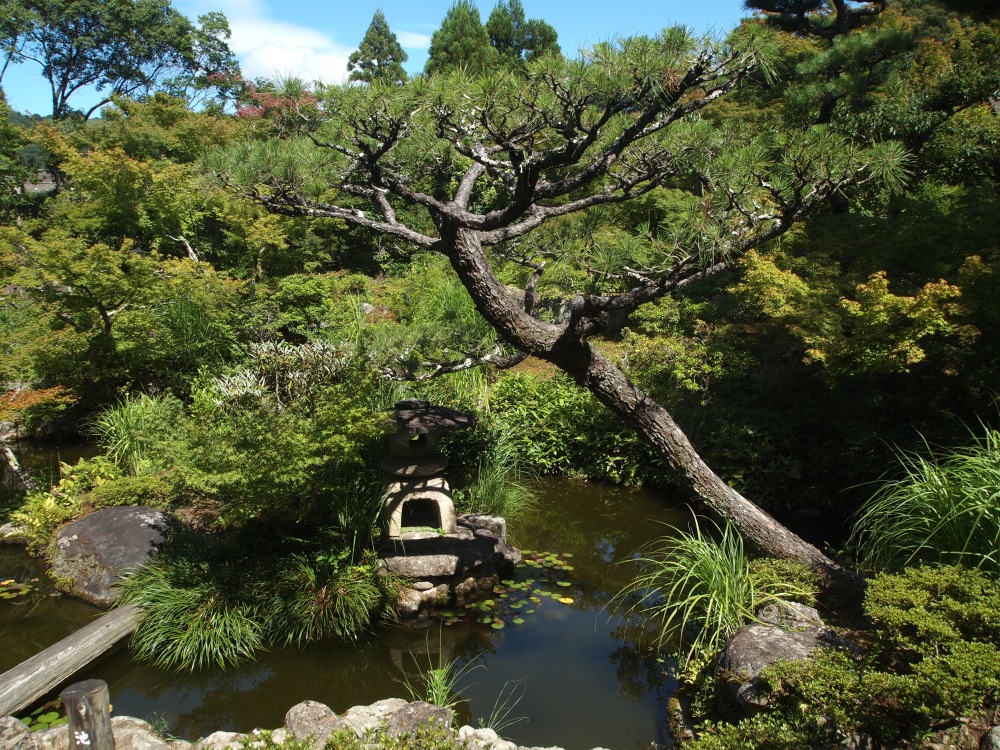
Yoshiki-en
Click on any of the pictures in the gallery below for a full-sized slide show.
After we explore the garden, I say goodbye to Christine and make my way to Tōdai-ji, walking through Nara-kōen, a park that is home to about 1,200 deer. The deer are considered National Treasures. In pre-Buddhist times, they were considered messengers of the gods. The deer roam freely throughout the park and won’t hesitate to approach people if they think they can abscond with a few morsels of food.

Nara’s deer
Tōdai-ji, “Great Eastern Temple,” was founded in 728 as a resting place for the Crown Prince Motoi, son of Emperor Shōmu (r. 724-749). The temple was used as the head temple of all provincial Buddhist temples of Japan and grew so powerful that the capital was moved from Nara to Nagaoka in 784 in order to lessen the temple’s influence on government affairs (japan-guide.com: Todai-ji Temple). It is believed the temple was built to consolidate the country and serve as its spiritual focus, but its construction almost brought the country to bankruptcy, according to Lonely Planet Japan.
The temple is famous today for housing the famous Daibutsu (Great Buddha) in the Daibutsu-den Hall of the temple.
I first pass through an outer gate.

approaching Todai-ji
Once through this outer gate, I’m face to face with the world’s largest wooden building, Daibutsu-den Hall. Unbelievably, this structure, rebuilt in 1709, is only two-thirds the size of the original.
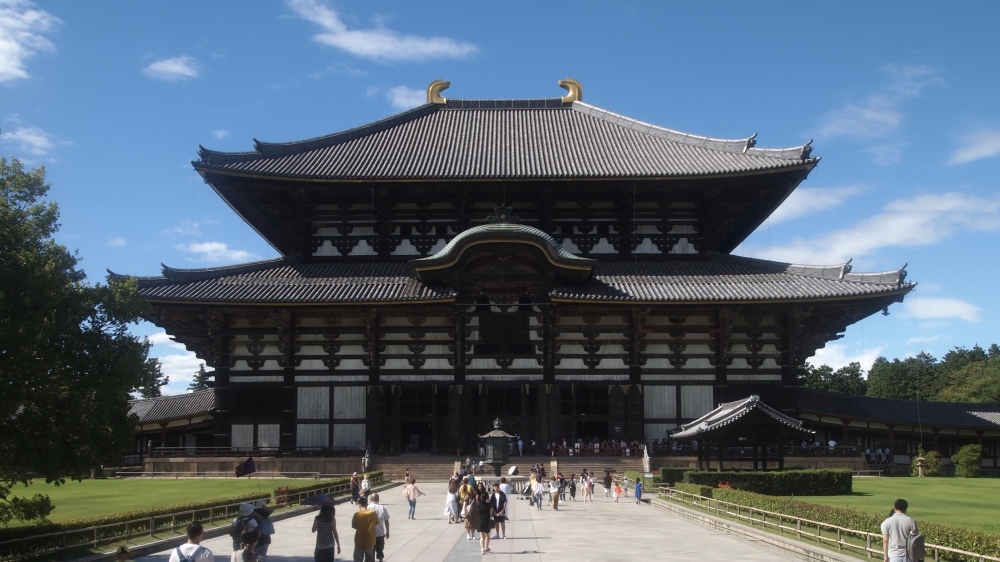
Todai-ji
The Daibutsu (Great Buddha) inside, originally cast in 746, is one of the largest bronze sculptures in the world. At one time it was covered in gold leaf, quite an impressive sight for Japanese 8th century visitors. The present statue, recast in the Edo period (1603 – 1868), stands 15 meters tall; the seated Buddha represents Vairocana, the cosmic Buddha believed to give rise to all worlds and their respective Buddhas (Lonely Planet Japan), and is flanked by two Bodhisattvas.

Daibutsu

Daibutsu
The Kokuzo Bosatsu, seated to the left of the Daibutsu, is the Bodhisattva of memory and wisdom. Students pray to him for help in their studies, while the faithful pray for enlightenment. Standing to the left of the Daibutsu and the Kokuzo Bosatsu is Komokuten, a guardian of the Buddha. He stands upon a demon (jaki), which symbolizes ignorance, and holds a brush and scroll, which symbolizes wisdom (Lonely Planet Japan).
A pillar with a hole in its base is supposedly the same size as the Daibutsu’s nostril. It is said that those who can squeeze through this opening will be granted enlightenment in their next life (japan-guide.com: Todai-ji Temple). I watch as a boy squeezes through the hole. I guess he will have guaranteed enlightenment!
I always love to check out the ema at every temple, and I find this cute one at Tōdai-ji: “I wish my family won’t be angry at Matthias. Hooray.”
Seated to the right of the Daibutsu is Nyoirin Kannon, one of the Bodhisattva that preside over the six realms of karmic rebirth.

Nyoirin Kannon

Nyoirin Kannon

Daibutsu
Pindola was one of the sixteen arahats, who were disciples of the Buddha. Pindola is said to have excelled in the mastery of occult powers. It is commonly believed in Japan that when a person rubs a part of the image of Binzuru (Pindola Bharadvaja) and then rubs the corresponding part of his own body, his ailment there will disappear.

Binzuru
The Tōdai-ji grounds are quite verdant at this time of year.
Nigatsu-dō lies to the east of the Great Buddha Hall and up the side of Mount Wakakusa. Nigatsu-dō (which translates to “The Hall of the Second Month”) is a beautiful hall that overlooks the city of Nara and provides a view of its ancient structures. To get to it, I walk through peaceful neighborhoods lined with lanterns, a welcome relief after the crowds at Tōdai-ji.
I line up with other visitors along Nigatsu-dō’s balcony to absorb the views.

Nigatsu-dō

view of Nara from Nigatsu-dō
The original construction of Nigatsu-dō hall is estimated to have completed somewhere between 756 and 772. Nigatsu-dō was destroyed in 1667 due to a fire. Re-construction of Nigatsu-dō was completed in 1669. In 1944, it was chosen by Japan as one of the most important cultural assets of the country. This sub-temple of Tōdai-ji reminds me of Kiyomizu-dera, which I visited in Kyoto in 2011 (golden pavilions, rock gardens, bamboo groves, and white-gloved train conductors).
I love all the lanterns at Nigatsu-dō.

Nigatsu-dō

Nigatsu-dō
Nigatsu-dō is quite majestic sitting high on the hill.

Nigatsu-dō

steps to Nigatsu-dō
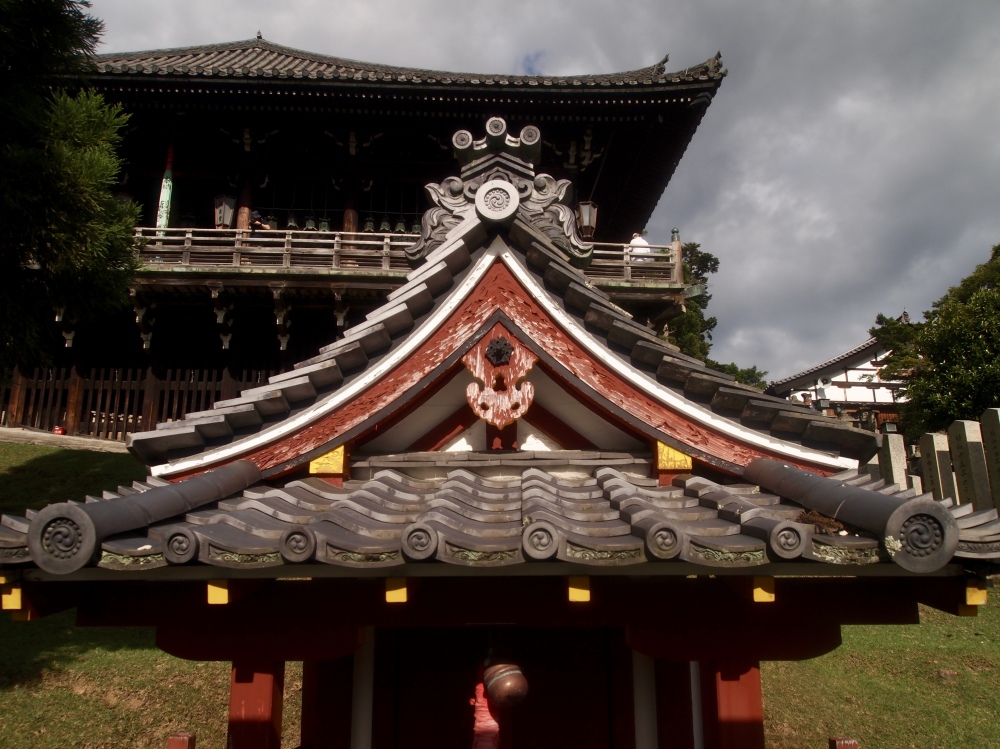
Nigatsu-dō
Nigatsu-dō is best known for Omizutori, a fire and water ceremony on March 12 every year, where huge flaming torches are held out from the temple balcony. The next day, sacred water is drawn from a well under the temple, which is said to have healing properties. The ceremony has been held here without a break since the temple’s founding in 752 (Visit Nara: Nigatsu-do).

Nigatsu-dō
Sangatsu-do Hall is home to a small collection of Nara-period statues.

Sangatsu-do Hall

Sangatsu-do Hall
Tamukeyama Hachimangu is a Hachiman shrine, dedicated to the kami Hachiman, a divinity of archery and war. It was established in 749. Kami, spirits or phenomenon worshiped in the Shinto religion, enshrined here include: Emperor Ōjin, the 15th emperor of Japan; Emperor Nintoku, the 16th emperor; Empress consort Jingū, who ruled beginning in the year 201; and Emperor Chūai, the 14th emperor.

Tamukeyama Hachimangu

Tamukeyama Hachimangu
After leaving Tamukeyama Hachimangu, I make my way back to Tōdai-ji, passing a spiral sōrin, circling Kagami-ike Pond, and finally walking under Nandaimon Gate. Nara’s deer keep me company the whole way.

sōrin at Tōdai-ji

Kagami-ike Pond

Kagami-ike Pond

Kagami-ike Pond

deer of Nara
As I’m leaving Tōdai-ji, I walk through the Nandaimon Gate, a large wooden gate, rebuilt in the 13th century, watched over by two fierce-looking statues. Representing the Nio Guardian Kings, the statues are designated national treasures together with the gate itself.

Nandaimon Gate
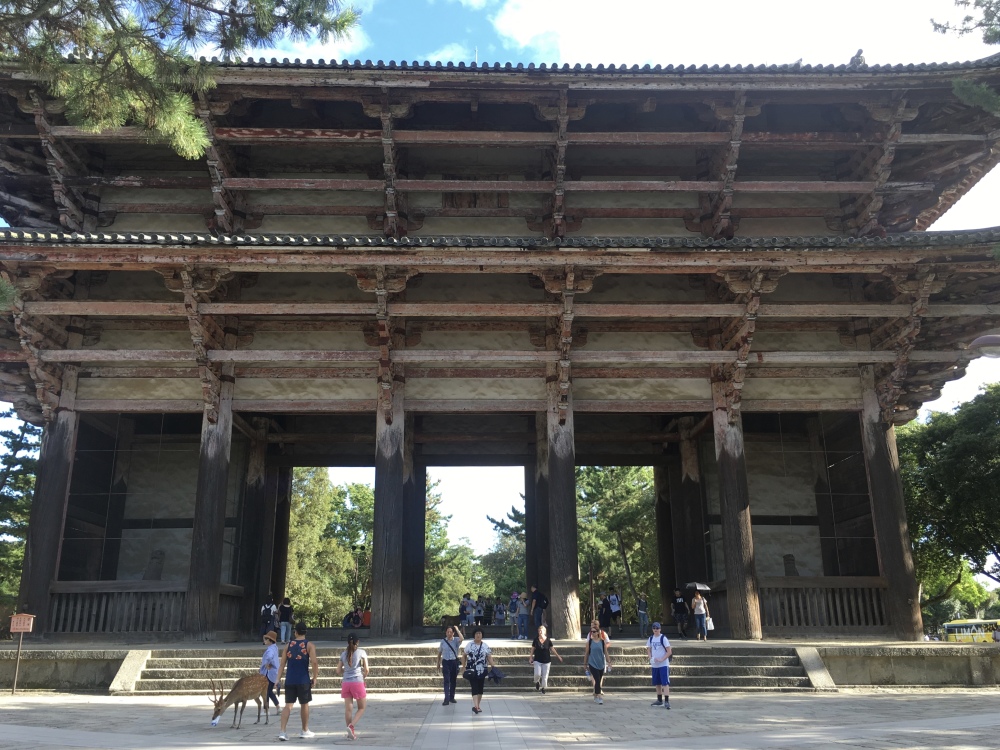
Nandaimon Gate
Nandaimon Gate is impressive in its size and ancient grandeur.

Nandaimon Gate
The deer of Nara are everywhere!
Nara’s deer are having a rest near the main gate, undoubtedly perspiring in this sizzling weather.
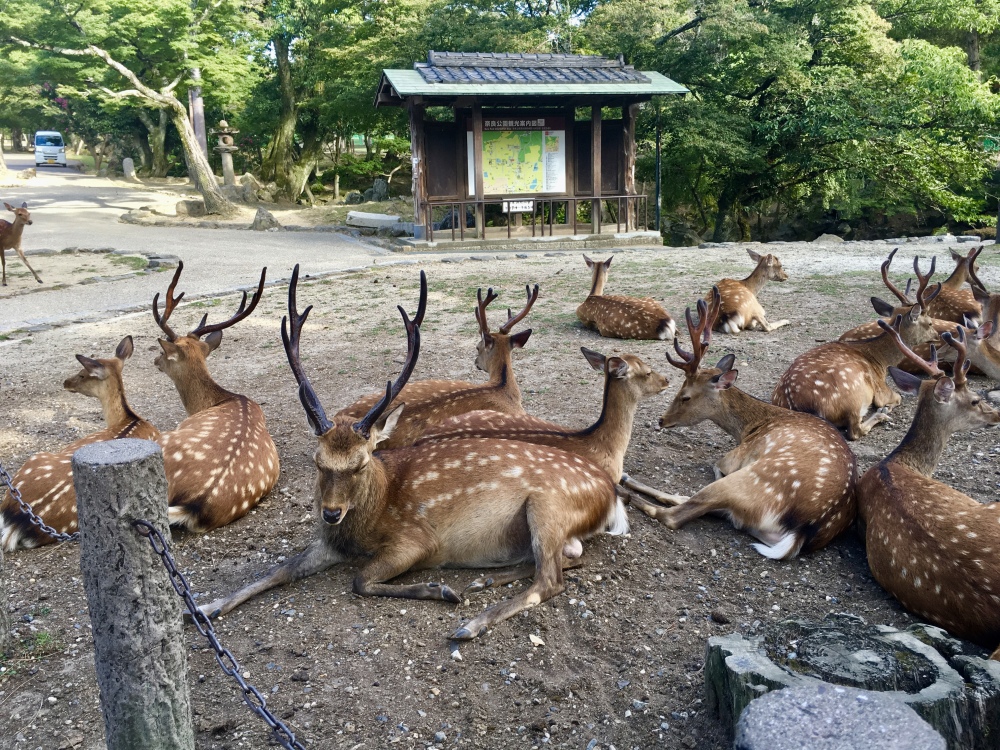
Nara’s deer
After taking a shower back at my hotel, I go into Nara Proper to have a Pizza Margherita at the Mellow Cafe.

mellow cafe
On the way back to my hotel, I stop for an ice cream with a little deer on top. It provides a bit of welcome relief from the heat
Tomorrow, I’ll explore more of Nara.
Steps today: 15,835 (6.71 miles)





























































